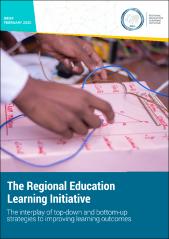The State of Education and Implications of SRHR on the Education of Adolescent Girls in Senegal.

Tarehe
2020Mwandishi
Abuya, B. A
Cisse, R.
Fall, N. A.
Muhia, N.
Metadata
Show full item recordUsage Stats
0
views
views
0
downloads
downloads
Kwa ufupi
In Senegal, adolescents aged between 10 and 19 years, and young adults aged 20-24 represent 22.5% and 9% of the general population respectively (ANSD, RGPHAE 2013). Senegal is one of five countries globally with the lowest gross enrollment rates for girls (87.92%) and low levels of reproductive health knowledge among girls and young women (UNESCO, 2015). In addition, out-of-primary school rates in West and Central Africa stood at 31% for females and 28% for males (UN, 2015, 2018). Moreover, more than 64% of the population in West and Central Africa is under 24 years (UNFPA, 2015), and the adolescent pregnancy rate is more than twice the global average, with more than one in ten girls aged 15-19 giving birth (UNFPA, 2013). The adolescent population has continued to experience poor education and sexual and reproductive health (SRH) outcomes, necessitating the need to build evidence on these education and SRH outcomes for targeted interventions and better decision making. The African Population and Health Research Center (APHRC), partnered with Forum for African Women Educationalists (FAWE), to implement a project dubbed "Improving Girls Education" with a goal of improving education outcomes and overall wellbeing of girls in Senegal.
Somo
Education and Youth Empowerment; Adolescent; Sexual Reproductive Health; Girls Education; Social-Emotional Development; InequalitiesURI
https://aphrc.org/wp-content/uploads/2021/02/APHRC-State_of_Education-Adolescent_Girls-Senegal.pdfhttp://knowhub.aphrc.org/handle/123456789/634
Collections
- 2020 [5]
